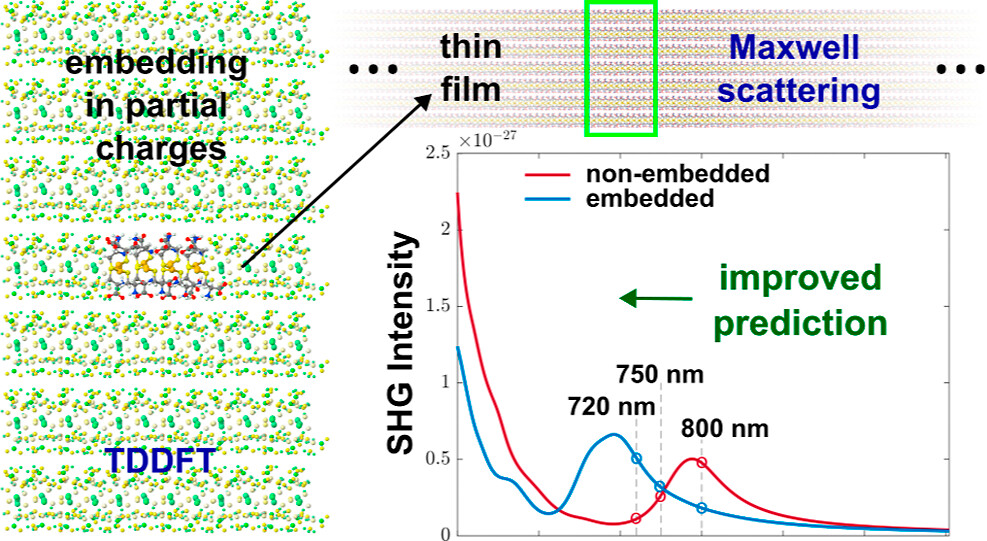YOUR BROWSER IS OUT-OF-DATE.
We have detected that you are using an outdated browser. Our service may not work properly for you. We recommend upgrading or switching to another browser.
Date: 12.09.2025
We are pleased to announce that a new article authored by members of our research group has been published in the prestigious The Journal of Physical Chemistry C. Title is: Predicting the Optical Properties of Organometallic Nanoparticles with a Scale-Bridging Method: The Importance of the Embedding
It remains a prime question of how to describe the optical properties of large molecular clusters accurately. Quantum chemical methods capture essential electronic details but are infeasible for entire clusters, while optical simulations handle cluster-scale effects but miss crucial quantum effects. To overcome such limitations, we apply here a multiscale modeling approach, combining precise quantum chemistry calculations with Maxwell scattering simulations, to study the linear and nonlinear optical response of finite-size supramolecular gold–cysteine nanoparticles dispersed in water. In this approach, every molecular unit that forms the cluster is represented by a polarizability and a hyperpolarizability, and the overall response is obtained by solving an optical multiple scattering problem. We particularly demonstrate how important it is to accurately consider the environment of the individual molecular units when computing their polarizability and hyperpolarizability. In our quantum chemical simulations, we do so at the level of a static partial charge field that represents the presence of other molecular units. Without correctly considering these effects of the embedding, predictions would deviate from experimental observations, even qualitatively. Our findings pave the way for more accurate predictions of the optical response of complex molecular systems, which is crucial for advancing applications in nanophotonics, biosensing, and molecular optoelectronics.
